25 lessons from a long-time gardener
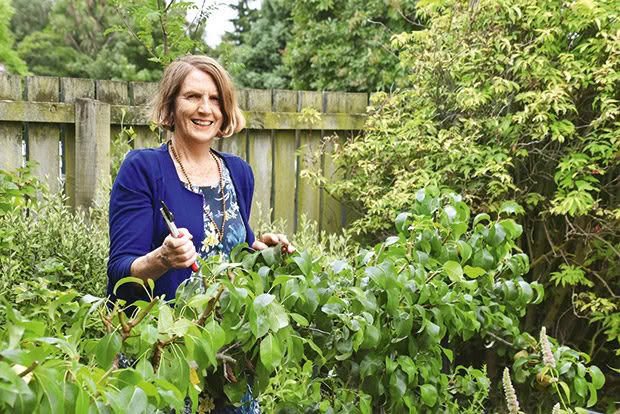
Gardens are great teachers, and Jenny Somervell’s has taught her a lot. She shares her key lessons, sometimes learned the hard way.
Words: Jenny Somervell
Lesson 1: The free addition that’s critical for good crops
If you’re not making good compost, either learn how to do it or find a good quality, fungi-rich source.
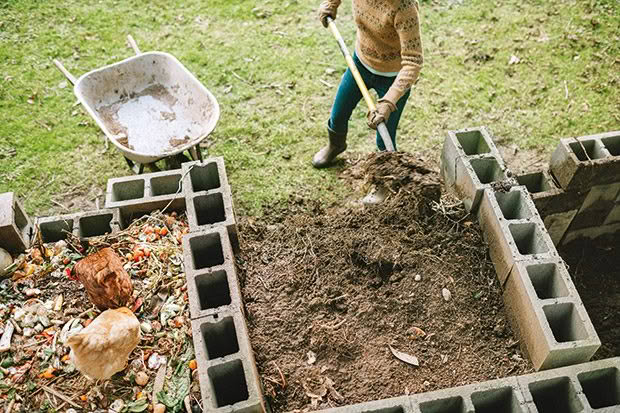
It makes a huge difference to productivity, no matter what your soil type. Good quality compost supplies nutrients, and improves the structure and water holding capacity of the soil, (which saves on irrigation).
Lesson 2: Avoid bare patches
It’s tempting to have a ‘clean’ soil in the spring garden, but it’s important to have banks of plants that feed and house beneficial insects. Leave some winter vegetables and herbs to go to flower such as parsnips, thyme and rosemary. Have flowering plants in your garden all year-round to provide nectar, pollen, and habitat.
Best spring option: Phacelia (frost-hardy, early to flower, nectar-rich)
Other options: alyssum, bergamot, borage, buckwheat, cow parsley, honesty, meadowfoam, Queen Anne’s lace.
Lesson 3: Check sowing times for your area
There’s a big variation in the timing and effects of the seasons across New Zealand. I still consult a seed sowing guide to check the best timing for my North Canterbury garden. I recommend cloches if you’re further south than me, or in a marginal area.
Where to find it: google ‘Kings Seeds sowing times’ for northern and southern sowing guides you can download and print for free.
Lesson 4: Buy a soil thermometer
It might seem a bit OTT, but these are cheap to buy and stop you from wasting seed. The optimal germination soil temperature for most vegetables is 18-24°C. Lettuce prefers cooler temperatures – over 20°C and their germination will drop significantly. Air temperatures are always higher than soil temperatures.
Lesson 5: Keep a garden diary
Record what you sow and when, and make notes on successes or failures because next year, you’ll have forgotten. Getting the timing right will save you money on seeds, and you’ll avoid frustration when things don’t germinate.
There are online apps available, some free, some which charge a small fee. There’s also a huge range of free templates online that you can download, print or save on your computer.
What’s the best way to organise a diary? Some people record things day by day, but it can be harder to find specifics if you want to refer back to it. You can organise it by each section (or bed) of your garden, or by crop. Have separate sections for weather, fertilising, planning, pruning etc.
Lesson 6: Experiment
Climate change is allowing us to push the boundaries of what we can grow. The longer, hotter summers mean I can now grow late crops of zucchini, beans, and sweet corn even though I’m in Canterbury. I’m even growing chillies.
Lesson 7: Some seeds are short-lived
Every gardener has a box of saved or unused seeds, but there are some you need to buy (or save fresh from the garden) each year to ensure good germination rates. This includes salsify, onion, angelica, parsley, parsnips, leeks, and carrots.
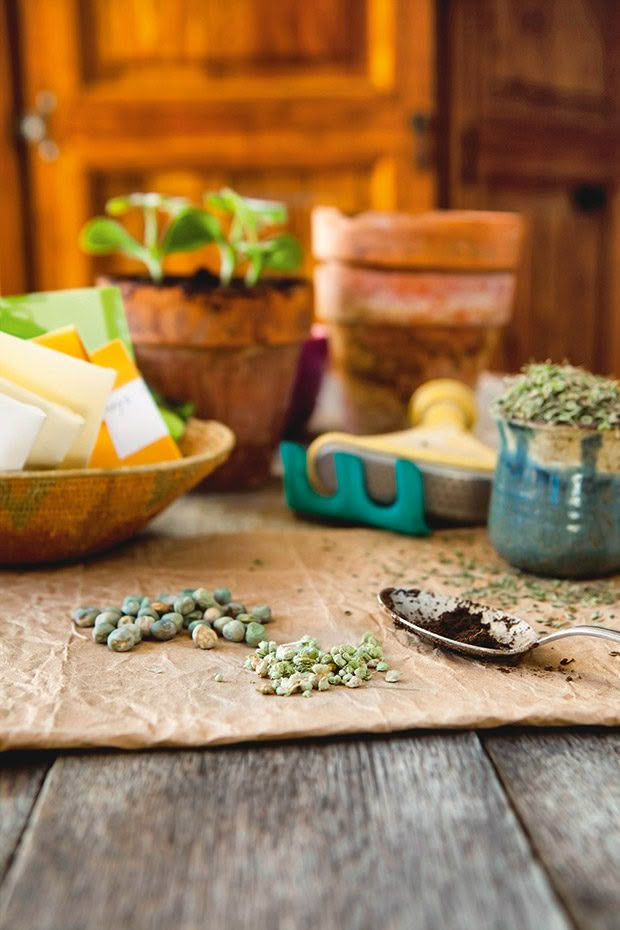
Bonus tip: always sow these seeds thickly and accept there will be wastage of seed.
Lesson 8: How to get good carrots, every time
Carrots need a well-dug, fine seedbed. Sow seeds no more than 5mm deep, cover, and firm the soil. Keep the top-most layer of soil damp during their long germination period. I sow my crops near a hose, so I can water the soil surface with a fine hose every time I walk past them. Cover seedbeds with insect mesh to keep birds off (which also helps to conserve moisture).
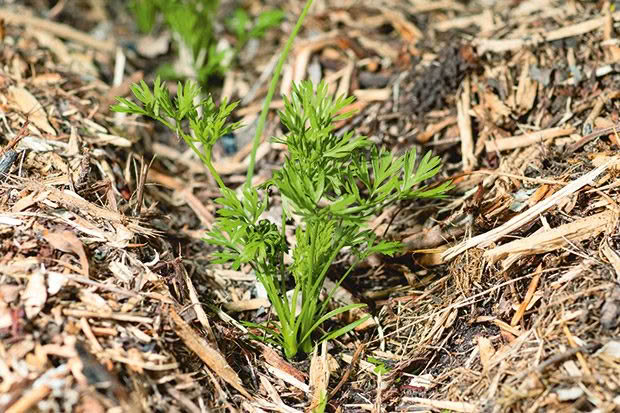
Bonus tip: be patient – it takes 14-21 days for carrots to germinate. Add the thinnings to salads.
Lesson 9: Sow more colour
I’ve found crops with yellow or white leaves, or roots – such as yellow-leaved silverbeet, golden beetroot, white carrots – usually germinate at a much lower rate than more common varieties. Sow these more thickly to get a good germination rate.
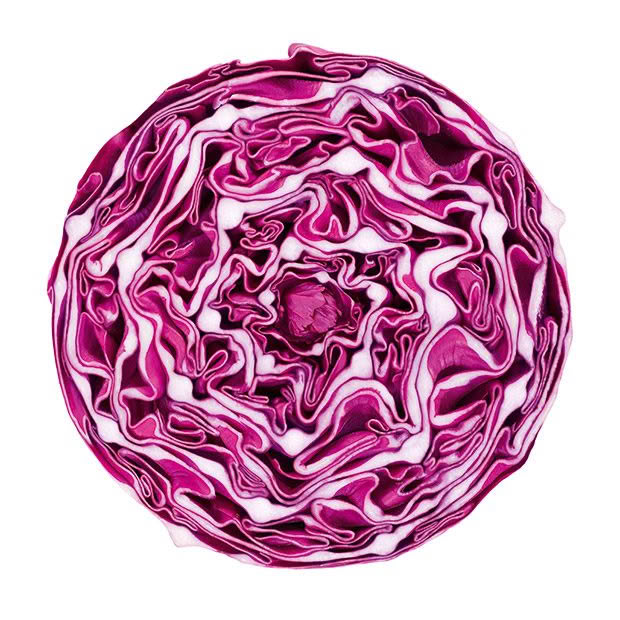
Red or purple cabbage? It depends on your soil. If it’s more acidic, you’ll get red; if it’s neutral, you’ll get purple. Always eat it raw as cooking reduces its nutrient and anthocyanin levels (the anti-oxidant that gives it its vibrant colour).
Lesson 10: Plant vegetables with similar growing requirements together
Plants that like rich soil: beans, sweet corn, tomatoes, basil.
Plants which don’t like to be too hot and prefer light shade in summer: lettuce, coriander, chervil, parsley.
Brassicas which need rich soil: Chinese cabbage, broccoli, red cabbage, Brussels sprouts, kale (it’s also easier to cover them all with insect mesh).
Root crops that need less organic matter: parsnips, carrots, yams.
Mediterranean herbs which prefer dry conditions: oregano, thyme, sage, rosemary.
Lesson 11: Don’t overfeed root crops
Don’t add a lot of compost or fertiliser to soil where you’re growing root crops such as parsnips, carrots, and swedes, or you’ll end up with lots of green leaves, and very little root.
Bonus tip: Plant root crops in beds that have just finished growing leafy greens or gross feeders such as corn.
Lesson 12: Cover up
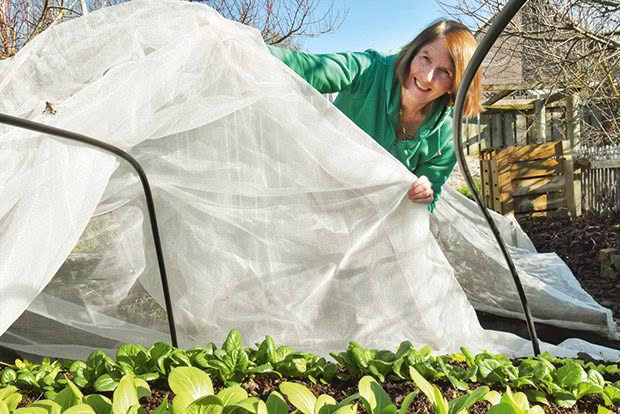
The right cover on the right plant will save you time spraying, and help you produce good quality, spray-free crops:
• Cover brassicas and carrots with insect mesh to keep off white butterflies.
• Cover tomatoes and potatoes with fine mesh to protect plants from the tomato potato psyllid.
Lesson 13: How to have a good summer garden and a holiday
Summer holidays coincide with high temperatures and exuberant growth. You can leave a tidy garden for 10 days and come home to a wilderness of knee-high weeds, and massive curling marrows.
Mulch everything. Use whatever is cheapest in your area (pea straw, bark, well-rotted sawdust). We stockpiled a truckload of sawdust several years ago and are still using it. It inhibits weeds and enhances soil fertility and structure. Most importantly, it conserves soil moisture levels, saving precious water and time.
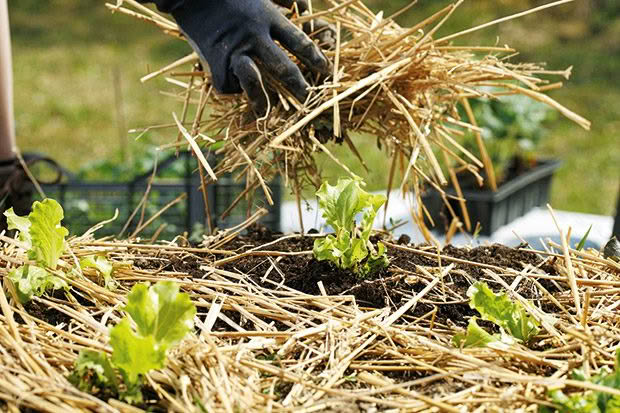
Cultivate neighbours and friends. Fellow gardeners are always a goldmine of information and assistance – I’ve shared many a lengthy cuppa bemoaning the wind, the rain, the early frosts. When they go on holiday, you can look after their garden, and vice versa. Make up a maintenance sheet with clear instructions on watering/irrigation systems and harvesting.
Lesson 14: Two good partners
I interplant young corn with lettuces. It’s a great use of space, and the corn provides cool shade for lettuce in high summer.
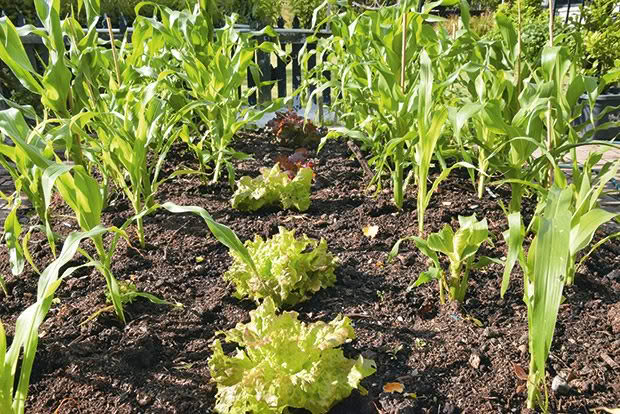
Lesson 15: Give your herbs haircuts
Clip herbs regularly, even if you’re not eating them, to encourage bushiness and new, vigorous growth.
Lesson 16: Compost the waste veggies
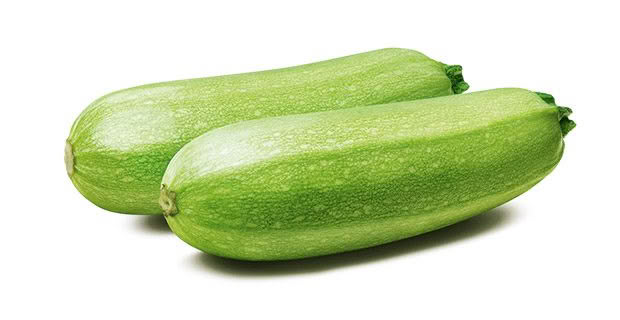
Pick fast-growing oversize zucchini and runner beans and add them to your compost. You could eat them, but I’d rather compost them and eat the tender ones.
Lesson 17: Set up a wash bench
An outdoor sink with running water and a brush is great for cleaning harvested veggies. Save the runoff in barrels for watering.
Lesson 18: Summer special care for stone fruit
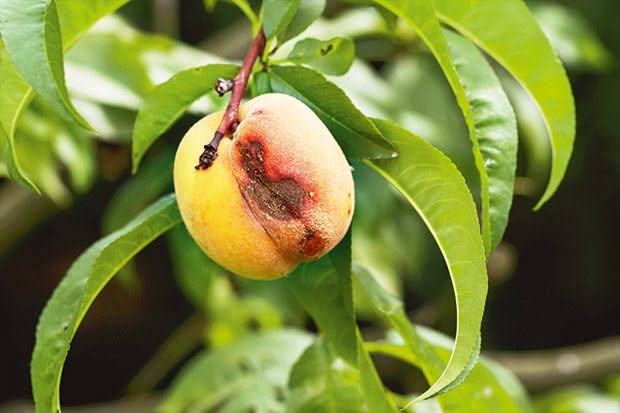
• Remove any stone fruit showing signs of brown rot.
• Avoid overhead watering, which encourages humidity.
• Pick stone fruit when dry and slightly under-ripe.
Lesson 19: The perfect time to pick pears
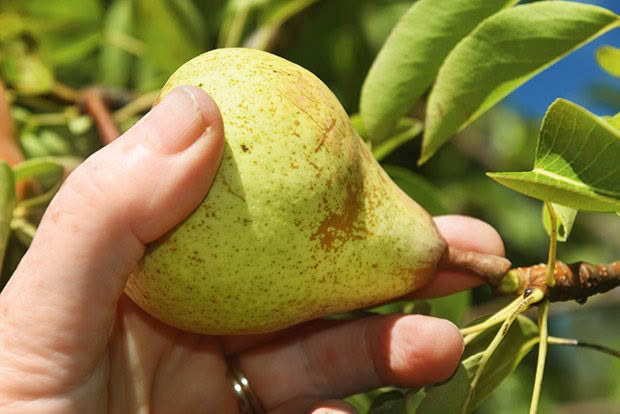
Pick pears while they’re still hard. Watch for a slightly lighter colour, the first windfalls, or bird interest. They should come off easily with an upward twist. Pears keep better if refrigerated first.
Lesson 20: How to be more fruitful
Check fruit and harvest regularly. Look for signs of rot or disease and remove them quickly, so it can’t spread. Extend your fruit-eating season by keeping fruit in the fridge – take it out a few days before you want to eat it, so you get the best flavour.
Lesson 21: Use winter to plan the new year
The more you like your garden and the plants in it, the more you’ll want to grow. Each winter, I ask myself:
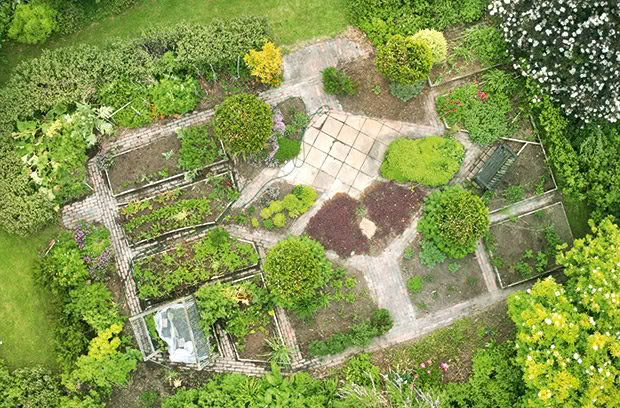
• What’s working well?
• What’s not working well (and why not)?
• What could be tweaked to improve things?
• What parts of the garden do I enjoy?
• What is a chore and needs to go?
• What new plants do I want to try? Adding a few new food plants each season is fun, both as a gardener and as a cook.
• What do I like to see, smell, and eat?
• What structures would help with productivity?
An important one for me was getting a tunnelhouse to extend our growing season. Raised beds mean warmer soil temperatures and easier weeding, sowing, and harvesting. Paving helps avoid mud, and they retain heat, helping to warm the immediate area on cold days.
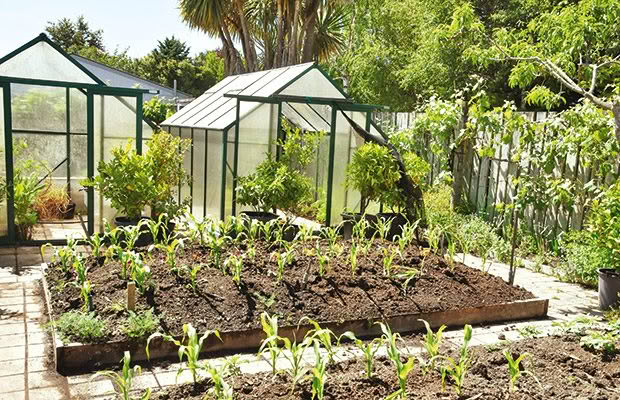
Lesson 22: Set up an automatic watering system
We invested in an irrigation system on a timer, installing it over winter, so it was in place by the time we started sowing the summer vegetables. Soaker or drip irrigators are usually more water-efficient and don’t contribute to the spread of disease. However, depending on your water supply, they can quickly clog up, so you may need a filter system. Newer systems can be controlled using your phone.
Lesson 23: Check your seed stores in mid-winter
Seeds should be stored in cool, dry, dark conditions and checked regularly over winter. Mice love to eat them, so it needs to be rodent-proof too.
Lesson 24: Do a stock take
Some seeds will last several years, while others are only good for one. Most packs of seed are only $3-$5, a cheap price to avoid disappointment and wasted growing space. Look for catalogues online (or in print) in July.
Lesson 25: Learn how to prune
I’ve been gardening for decades, and still refer to my favourite pruning books every year on how to best prune pip, stone, and berryfruit. It’s important to check – some trees bear fruit on one or two-year-old wood, and that’s very easy to lop off.
Get a good pruning book with diagrams. Photocopy the pages you need if you don’t want to run the risk of taking an expensive book out into the garden. Have them on a clipboard in the shed, and better still, laminate them.
JENNY’S FOUR DON’TS OF GARDENING
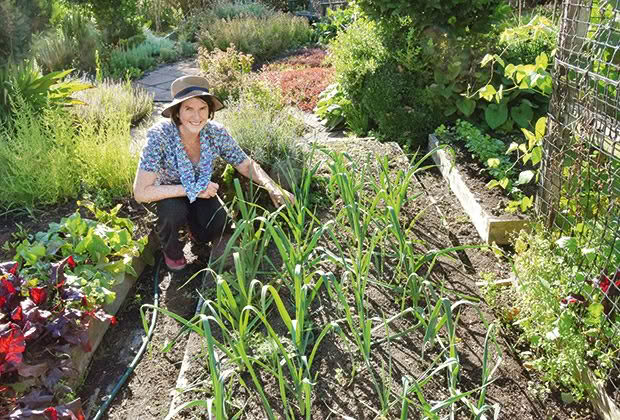
1. Don’t add new garden beds or plant fruit trees unless you agree with your significant other on who will do the weeding, pruning, spraying, and watering now, and in the years to come.
2. Don’t go to a nursery or garden centre without a list. Avoid impulse buys, especially for plants that will be in your garden
or orchard long-term. It’s like clothes – you want to really love the plants and trees you choose or you won’t eat or enjoy them. Also, it can be really expensive!
3. Don’t leave seed packets in the sun or a hot place (or worse still, under a sprinkler). Seeds rapidly lose viability in light, and in temperatures over 25°C.
4. Don’t lose track of the tools, equipment, and books you use in the garden and check you’ve got it all when you go inside. I’ve ruined two precious gardening books under sprinklers, and a pair of secateurs (which turned up a year later at the bottom of the compost bin).
Bonus tip: Have a dedicated harvesting knife, preferably in a bright colour, or attach a bright material to the handle so it’s easy to spot. Don’t use smaller kitchen knives that are easy to lose (and in my garden, never seen again).
MORE HERE
Sarah Hopkinson transforms the front lawn of her 800sqm section into a productive vegetable garden
Love this story? Subscribe now!
 This article first appeared in NZ Lifestyle Block Magazine.
This article first appeared in NZ Lifestyle Block Magazine.
